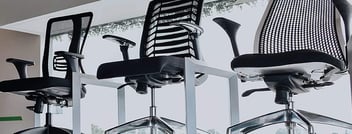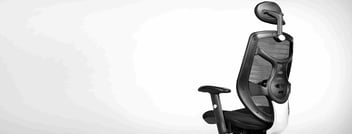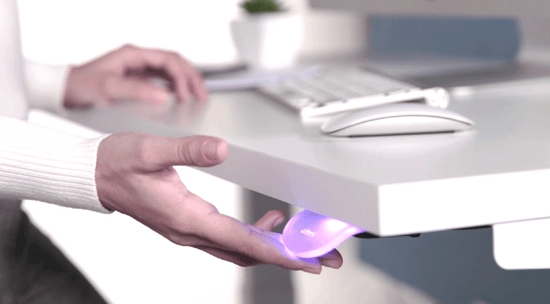How color and lighting can affect office productivity
Creating the right environment to promote your employees’ focus and office productivity depends a lot on your selection of color and lighting.
Experimenting with various types of lighting and color in the office is not a recent phenomenon. However, recent studies have succeeded in more accurately documenting multiple guidelines that are relevant for companies today.
Lighting and color are factors that can not only change the mood and level of disposition of workers in an office but can even dramatically increase office productivity, thus generating more efficient environments.
Here are some quick tips on how proper lighting and tone can enhance your business results.
Natural light can increase office productivity
When working in spaces with good natural lighting (i.e., from sunlight), blurred vision, headaches, and eye strain are reduced by up to 84 percent, according to the results of research by Cornell University's Department of Environmental Design and Analysis.
It's no surprise that many companies give importance to spaces with large windows or even build large transparent domes to make better use of natural light. This involves some investment to expand the capacity to attract natural light. However, this is a worthwhile cost, not only because of the savings in electricity consumption but also because of its ability to enhance its productivity.
This contributes significantly to regulating hormones and circadian rhythms (the natural, internal process that regulates the sleep-wake cycle) of workers, as documented in a study by the American Academy of Sleep Medicine. This is not a minor issue, since helping to balance this life cycle also contributes to workers being able to rest better during the night and return with greater vigor the next day, allowing their contribution to be more productive.
Of course, factors such as interior visibility need to be considered, even more so when working with some monitor or screen. An excess of sunlight, or if it hits directly on the electronic devices, can obstruct a proper display, which will cause the viewing to be more complex, and therefore generate unnecessary disruption.
Office furniture arrangement and some partial and movable coating on the windows, such as blinds, curtains, or diffusers, will help maintain the ideal lighting in all circumstances.
Taking advantage of color psychology
For artificial light and color in offices, several exciting factors can be examined. To stimulate productivity, generating an environment with a blue or fresh tone favors concentration, and therefore can significantly improve performance, even more so when doing work individually.
The University of Texas confirmed this through a study in which a better production rate was recorded in rooms with blue or green-blue tones than in white or yellow or red colors.
This does not mean that other colors are not useful; for example, when conducting some collaborative work, yellow tones have been shown to generate synergy, which can be beneficial, for instance, in a boardroom. It is also capable of promoting creativity and memory, as revealed in a series of analyses by specialist psychologist Angela Wright.
According to recent studies, for those office spaces that are more focused on relaxation, such as a living room or recreation area, lighting with a green hue may be more appropriate to encourage even greater relaxation.
Ability to customize
For years there has been a broad debate about the best type of artificial light for offices. It was believed that LED lights could be a more efficient alternative for a long time due to their more controlled energy consumption.
However, the advance of energy-saving lamps, which have now also allowed for efficient light consumption, has proven that they continue to be a useful alternative, even more so when they can better meet a particular office’s needs.
For example, current lighting technology has allowed offering light systems, where it is possible to control the intensity and change between different shades.
This feature is useful, as there is no “one size fits all” combination of light and color. One must consider the type of offices and work being done. Also, each individual is different and has a preference for different types of lighting.
External lighting also changes the office’s conditions throughout the day, so the ability to tailor office lighting to different tastes and needs and external issues is a unique feature.
Several studies have shown that it is favorable to adopt a bluer or cooler environment in the first hours of the working day to encourage concentration. In contrast, for the final phase of the day, the yellow shades can balance employees’ fatigue levels.
In any case, adapting your working environment’s lighting will also allow you to explore different combinations for your particular case. Defining a method that also allows you to measure the office’s performance level will also let you take meaningful steps to find the ideal combinations, which will significantly boost your office productivity.





